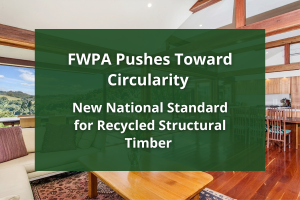The National Construction Code 2016, Volume One, was adopted by all Australian States and Territories effective from 1st May 2016.
Work has continued in developing the technical support documentation for the NCC mid-rise timber building code change. An extensive series of workshops/seminars have been undertaken to inform and inspire building/design professionals about the mid-rise timber building changes in the NCC 2016 and to distribute WoodSolutions’ resources.
Resources currently being finalised include:
- Technical Guide #37 Mid-rise Timber Buildings – Class 2, 3 and 5
- Mid-rise Timber Buildings – Class 2, 3 and 5 (Educational/Training Resource)
- Technical Guide #38 Fire Safety Design of Mid-rise Timber Buildings – Class 2, 3 and 5
- Technical Guide #39 Structural Robustness
Further development around the code change
The NCC 2016 permits the use of timber structural elements in mid-rise buildings, which has generated a demand for the development of service penetration configurations that are practical to install and maintain without compromising the performance of fire-protected timber members.
Plumbing drain, waste and vent services and other services may run in floor cavities and if these services penetrate the flooring above (e.g. particleboard) or a shaft from within the ceiling space, substantial protection will be provided by the fire-rated ceiling below such that additional fire-protection measures at the point of penetration of the flooring may not be required.
This approach in conjunction with false ceilings and some false wall coverings and non-combustible shafts will substantially reduce, and potentially remove the need for, services to penetrate fire protected timber walls and ceiling systems and reduce the risk of fire protection systems being omitted or disrupted during the life of the building.
A test program is being undertaken to investigate the level of protection provided by different ceiling systems to determine the fire resistance level (FRL) of a range of service penetrations. The systems are being designed to be capable of achieving FRLs varying from 90/60/60 to 120/90/90; and possibly 120/120/120 for some services / ceiling systems.



